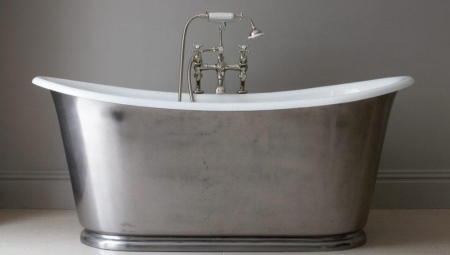Bath - the most important plumbing fixture in any home. This is one of the main amenities of any home. With all the current abundance of various materials and technologies, most people prefer centuries-old metal bathtubs. They will be discussed in this article.
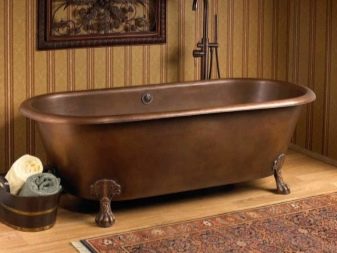

Features
Metal bathtubs are appreciated for durability and unpretentiousness. They withstand long-term operation and are famous for good maintainability in case of damage and enamel wear. These qualities provide steady demand for metal bathtubs and good customer reviews.

Varieties
According to the material of manufacture, metal baths can be:
cast iron;

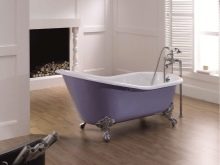
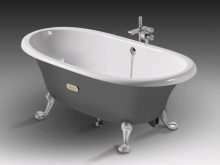
- steel.



Cast iron is a heavy alloy of iron and carbon. Baths from it are fantastically reliable and monumental.
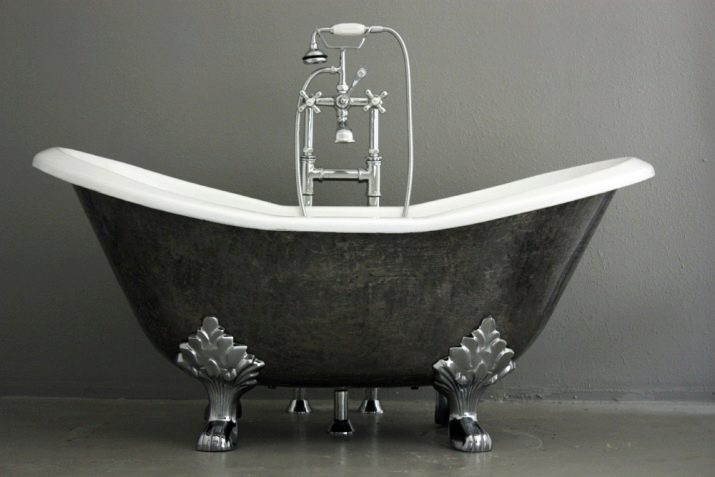
Steel is a lighter alloy, resistant to loads, impacts and deformations.
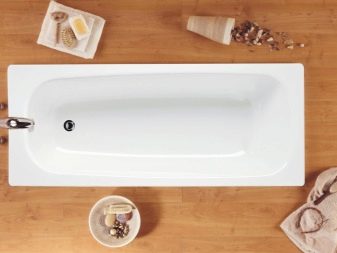

For the manufacture of bathtubs are used:
stainless steel;
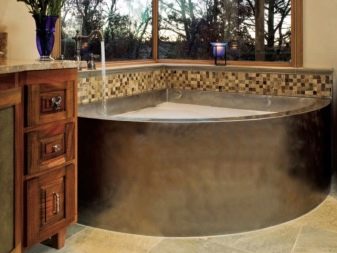
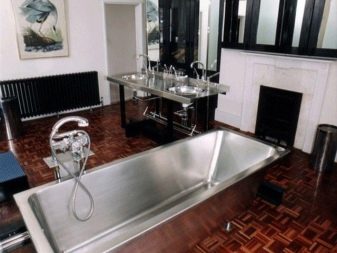


- structural steel.
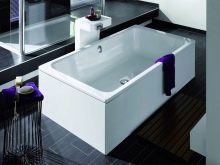
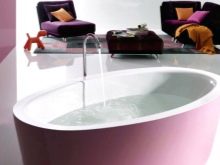
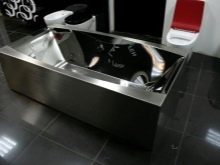
Stainless steel bathtubs are not in great demand due to the high price and some aesthetic inconveniences (in particular, the constant struggle with lime scores). This is an amateur product.
Structural steel bathtubs are the most common and popular product on the plumbing market.
Their price in the bulk is budgetary and affordable for most consumers.
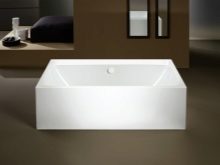
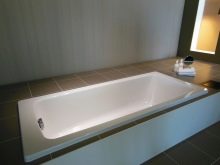
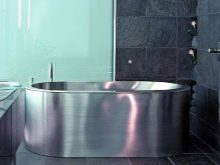
Advantages and disadvantages
Let's start the review with cast-iron bathtubs. Their strengths.
- The highest reliability. They serve for decades without any serious damage. Only enamel wears out, which is usually restored without any problems.
- Keep heat well, cool slowly. Although it warms up longer than steel.
- Do not be afraid of handling caustic cleaners.
- Almost silent. Do not rattle under running water when filling.
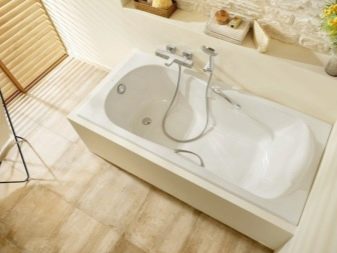
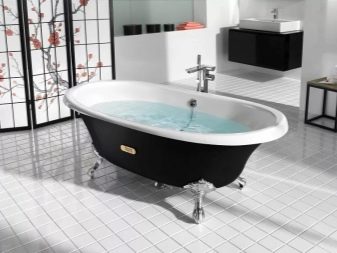

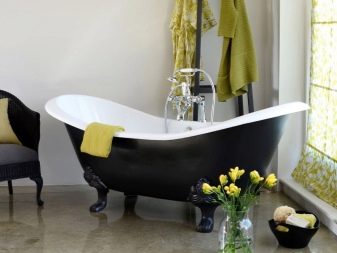
But they also have significant disadvantages that may turn out to be decisive when choosing.
- They are very heavy. This greatly complicates their delivery and installation.
- They cost significantly more than steel.
- Technological features and properties of cast iron allow to make fonts of only standard forms. This does not appeal to buyers with a creative and inventive mindset.
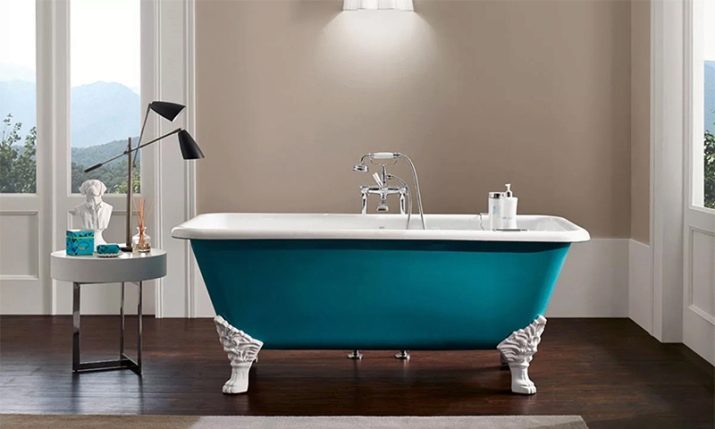
The pros of steel baths are the exact opposite of the minuses of cast iron.
- Ease. In principle, one person can transfer and install a steel bath.
- Low price. They are affordable even to the poorest consumer.
- They warm up quickly and do not require too high a water temperature. At the same time, however, it should be remembered that they cool faster than cast iron.
- Depending on the wishes of the customer can be of any shape and configuration. Steel allows you to realize any fantasy.
- Strong and durable. In this, of course, they are somewhat inferior to cast-iron, but with careful handling they can also serve for decades.
- Insensitive to active cleaning and disinfecting agents (except for abrasive powders).


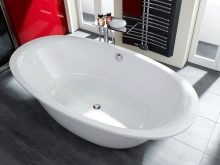
They have steel baths and two significant drawbacks.
There is a possibility of deformation and, as a result, enamel damage. When buying, it is recommended to pay attention to the thickness of the metal. It should be from 3 millimeters.
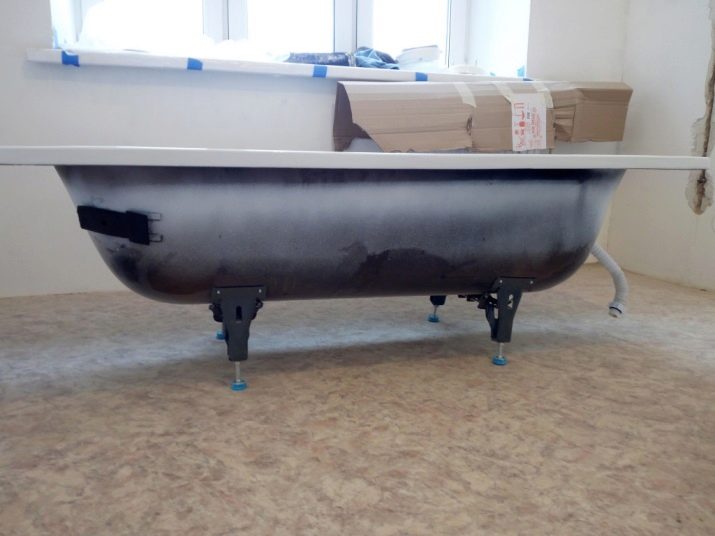
Noisiness. Thin walls and the bottom thunder under a stream of water when filling. Well-known methods of sound insulation will help here: covering the outer surface with foamed polyethylene, polyurethane foam, pasting with various insulating materials.
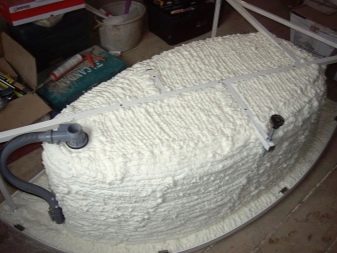

Shapes and sizes
Steel baths can be made in any form at the request of the customer. The technology of their manufacture (in fact, hot stamping) allows you to do this.
You can order an individual form, which will cost much more, or take advantage of the choice that stores provide.
The most common fonts standard rectangular shape. But there are angular, square, oval, semicircular, drop-shaped, triangular and others. The form in this case is dictated by the imagination of the consumer and the conditions of the bathroom.
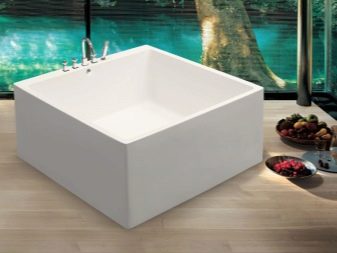
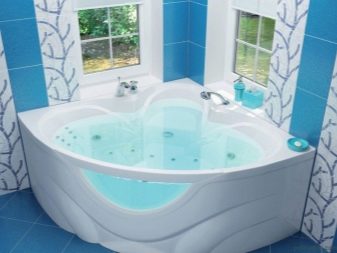
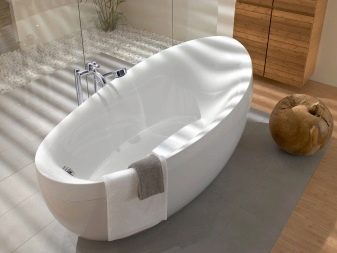
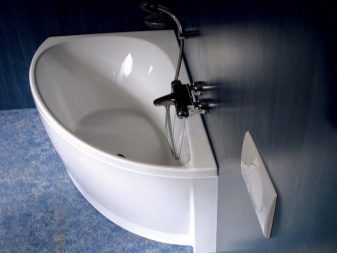
The sizes of the bathtubs can be very diverse. But classic rectangular bathtubs are usually of several standard sizes: width - 70-75 centimeters, depth - 40-50.
These sizes allow almost any person of medium and relatively large complexion to fit in the bath.

As for the length, here the choice depends on the size of the bathroom, as well as on individual preferences of a person. The market offers:
- short (or “sitting”) baths: 130x70, 140x70 cm;
- standard Russian: 150x70, 170x70 cm;
- standard european: 170x75, 180x70, 180x80 cm.
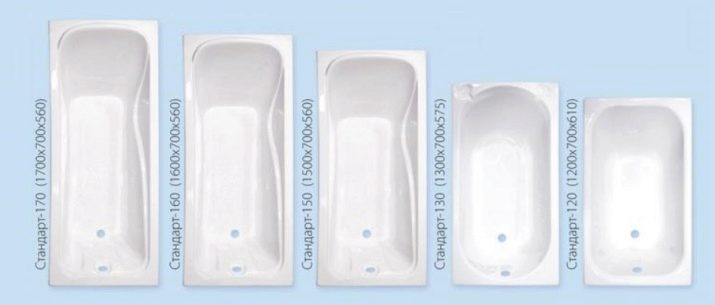
Russian standards are designed for average human growth. European standards provide a little more room for choice.
In recent years, bathtubs with a length of 200 centimeters have appeared, in which even a very tall person can freely lie.
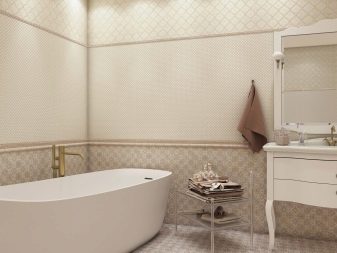
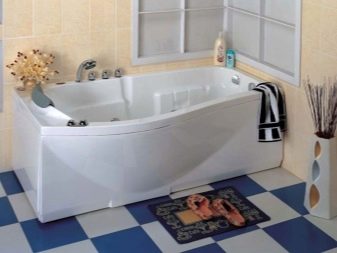
Color schemes
Modern chemistry allows you to paint both the inner enamel and the outer surface of the bathtubs in different colors. Here a lot depends on the personal preferences and taste of the buyer and customer. Many people now strive for unity of style.
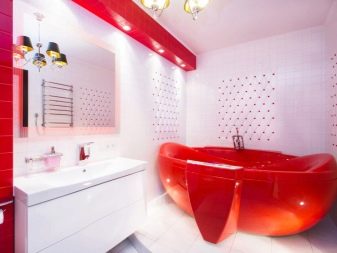
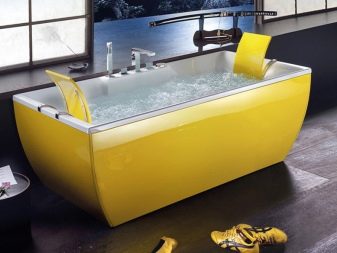
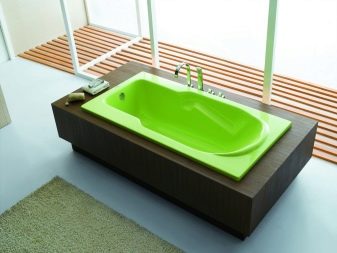

The color of the bath should harmonize with the decoration of the walls of the room.
Others, on the contrary, prefer defiant catchy colors. Most non-spoiled consumers prefer the standard colors: white enamel and dark color on the outer surface. The market offers abundant options for every taste and budget.

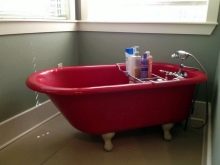
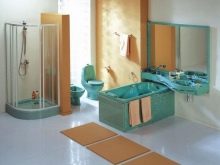
Designers give the following recommendations.
- Bathroom - the room is usually small. Dark colors visually reduce its volume. Therefore, it is better that bright and light colors prevail in it. The color of the bath should be consistent with this principle.

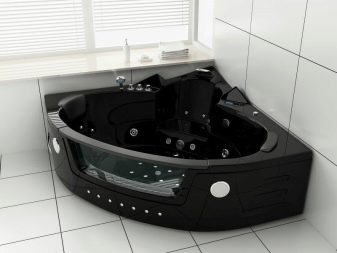
- Bathing is a calming process. Therefore, the colors of both the bathroom and the bath itself should not be poisonous, annoying.

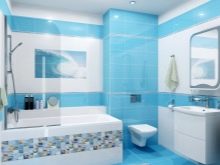

- The bathroom should have good lighting, sufficient for hygienic and cosmetic procedures. The color of the walls and the color of the bath should emphasize this light and, if possible, enhance it.

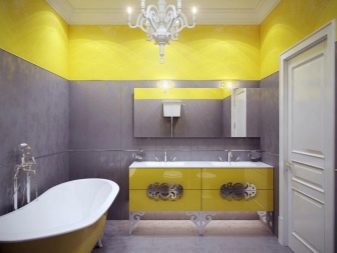
All this leads to the idea that the optimal color of the bath is still traditional white.
Owners of non-standard taste are recommended to correlate dark and sharp colors with the size of the bathroom and the degree of illumination.

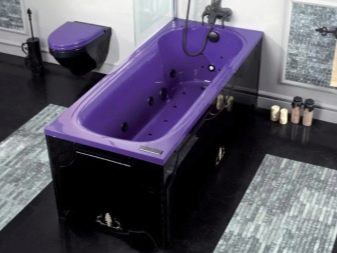
How much does it weigh?
The weight of a standard bath made of structural steel is 35-40 kilograms. This is a very significant characteristic for bathtubs made of this material. Lighter models are more prone to deformation and related damage. It is recommended that when buying, be sure to ask sellers about this.
The lightness of the steel bath facilitates its installation, but also requires great attention to preparing the surface for the supports. Accuracy is very important here, otherwise stability will be violated.
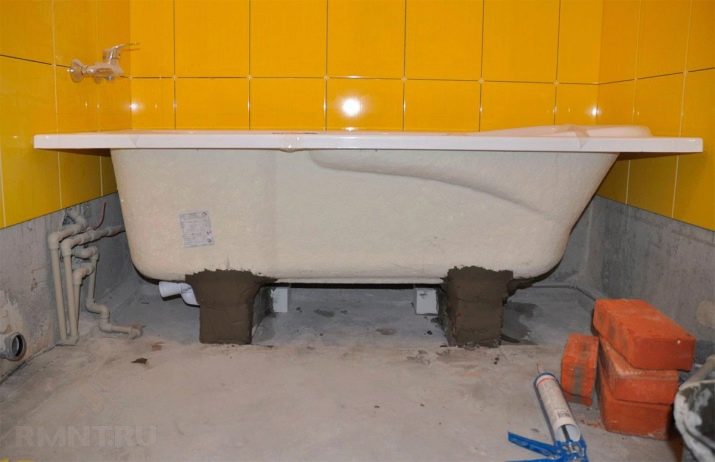
A cast-iron bathtub, depending on its size, weighs 80-130 kilograms. Its delivery and installation requires the work of several people. In the conditions of cramped Soviet-type apartments, this can be very troublesome. In addition, the strength of floor floors should be taken into account, because the weight of such a font with water and a bather can be simply dangerous. But stability with such a weight is ideal.
Even minor irregularities and imperfections in the floor surface will not play a significant role.
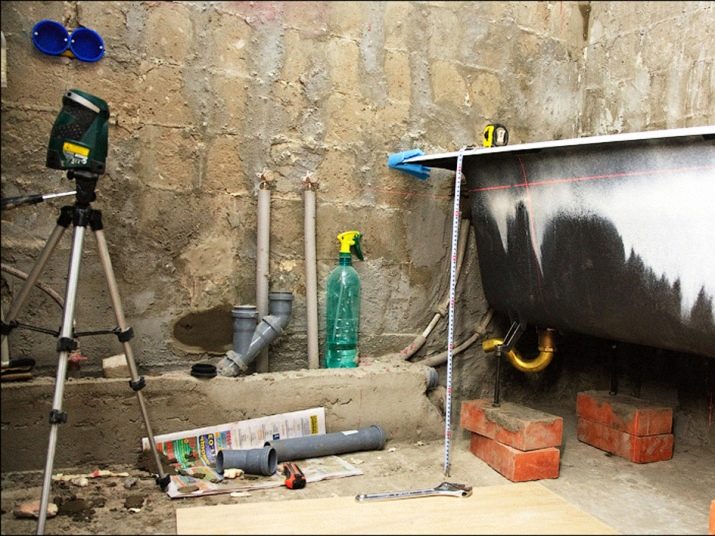
Manufacturers
German companies occupy leading positions in the global metal bath market Kaldewei and Bette. Their products are made in strict accordance with European standards and are distinguished by practicality, functionality, ease of installation and daily operation. Leading companies are introducing new metal processing technologies, developing damage-resistant coatings, and taking into account the anatomical features of the human body in the development of models.
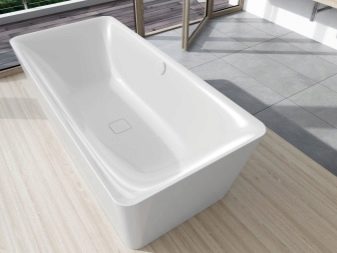
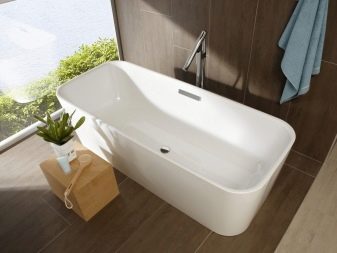
Portuguese company BLB produces comfortable and technological bathtubs for a wide range of consumers. They are distinguished by sophisticated design. The rectangular bottom provides spaciousness and comfort for the swimmer. Geometrically, it is designed so that the water drains without a trace, almost to dryness.
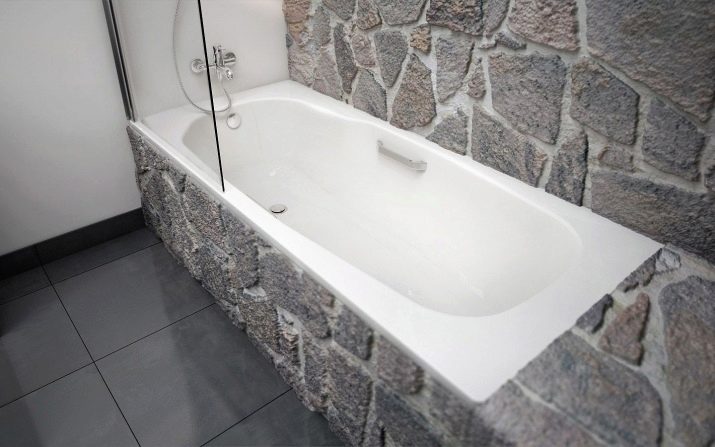
Spanish company Roca - A transnational corporation for the production and sale of plumbing. Roca plants are scattered around the world. Roca baths, from the most basic to the most sophisticated, are made with love for and care for the person. It is impossible to slip on their enamel: a special anti-traumatic coating is used.
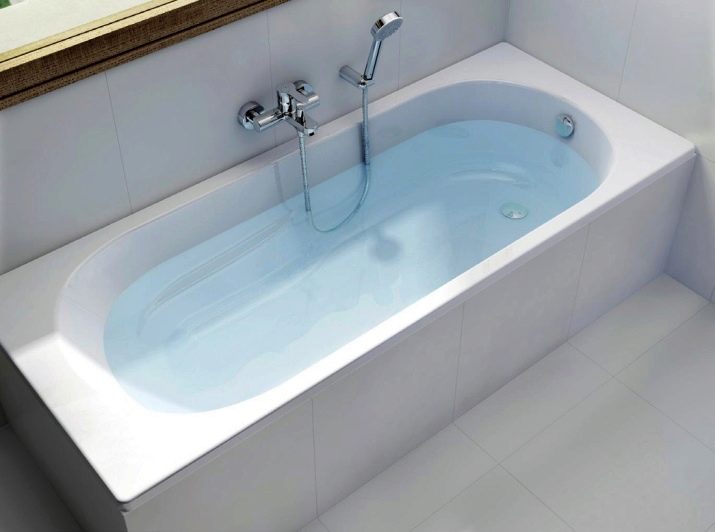
Czech company Jika has established itself as a manufacturer of reliable and inexpensive steel bathtubs.
Products are not distinguished by a wide variety of models, but the price / quality ratio has always attracted Russian consumers.
With European quality, advanced design and state-of-the-art technology, in reviews you can often see complaints about fastenings, the complexity of the installation, and the unreliability of the enamel coating. Here, one should take into account the traditional unwillingness of many buyers to thoroughly understand the instructions, and, of course, the price segment: bathtubs of the highest quality are quite expensive, and the Russian consumer is poor for the most part.
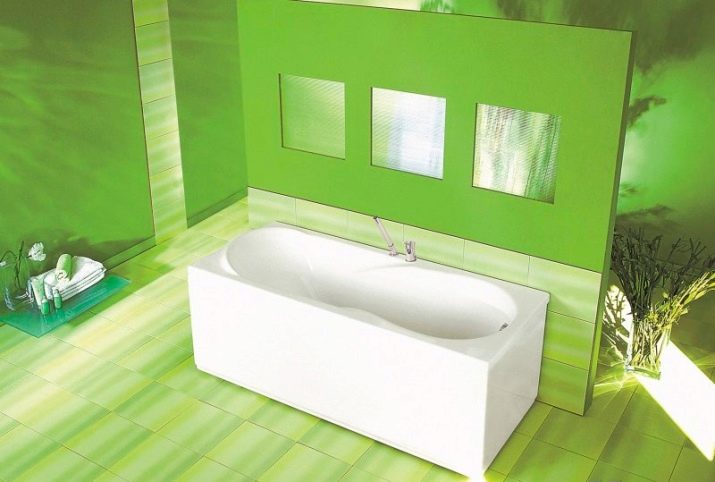
Of the Russian manufacturers of metal bathtubs, the Verkh-Isetsky Metallurgical Plant is the most famous. He manufactures products under the brands Reimar, Donna Vanna, Antika. The plant is constantly improving the quality of enamel, has developed a special external coating that increases the service life of the bathtubs, as well as noise insulation, which is applied already at the factory, and not glued at the expense of the consumer.
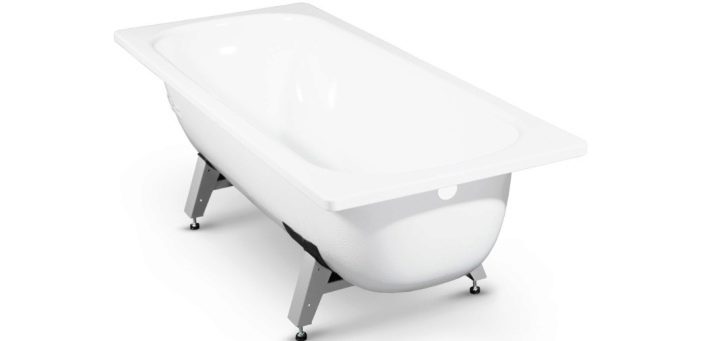
In second place is one of the oldest manufacturers of sanitary ware in Russia Santo-Holding OJSC (Lipetsk Pipeline Plant). It has been producing cast iron and steel bathtubs for 70 years. The products are not particularly graceful and diverse, but they are quite satisfied with the price of consumers.
In general, the price of domestic bathtubs is approximately two times lower than that of bathtubs of the lowest price category of European manufacturers. This factor is most often the determining factor.
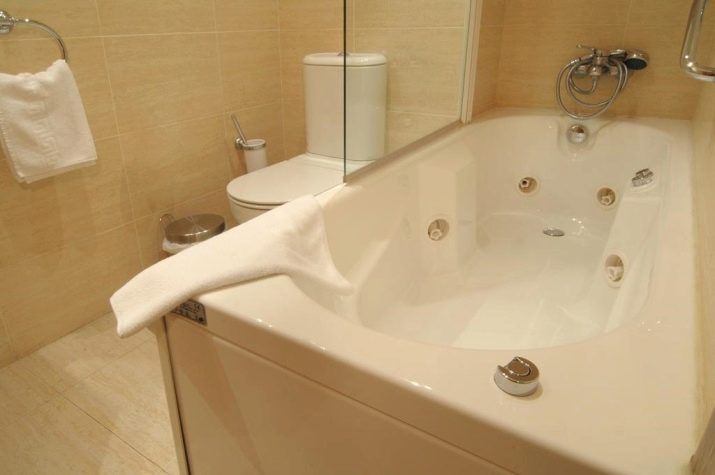
Now the Russian market is gradually being conquered by Asian companies, primarily Chinese. They offer a huge selection of the most varied bathtubs at attractive prices. So far, these manufacturers do not have much confidence in the market, but they have significant prospects.
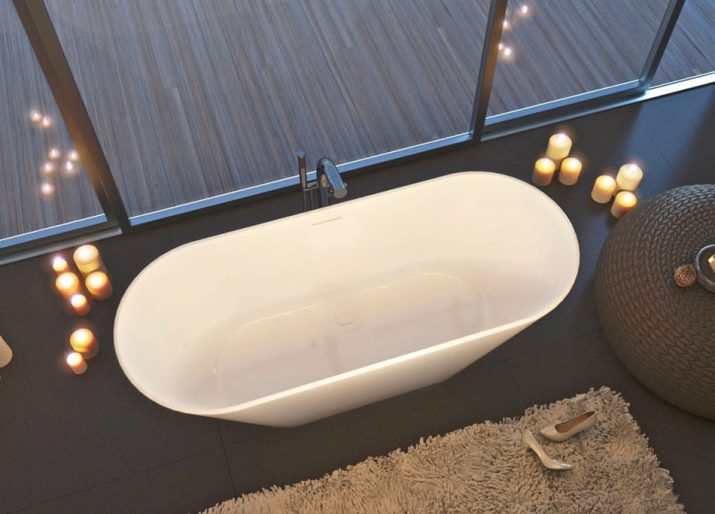
How to choose?
Summarizing all the above, one would think that with the current abundance and diversity that the market offers us, choosing a bath is a difficult and almost impossible task. In fact, everything is much simpler. Most consumers - people are not very demanding, not rich, and the main thing for them is an acceptable ratio of price and quality. This explains the popularity of products of domestic manufacturers.
Russian baths are no better than European, but no worse, and most importantly - much cheaper. Therefore, to analyze the ratings of manufacturers and study reviews on the Internet, as a rule, does not make much sense.
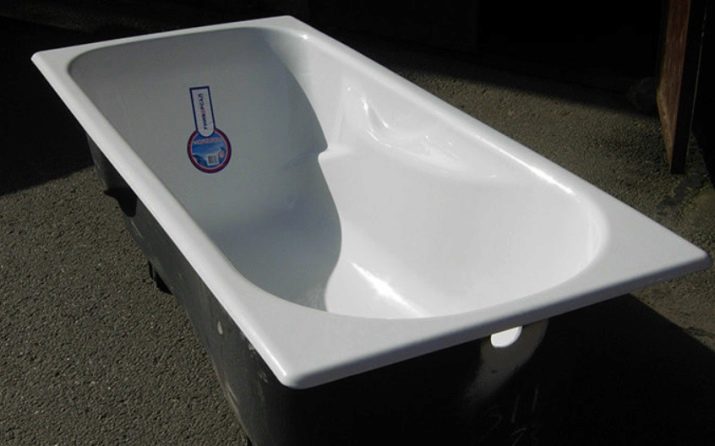
However, some practical recommendations can still be given.
- Pay serious attention to the condition of the enamel. Chips, cracks and bumps should not be in any case.
- Assess the thickness of the steel sheet from which the bathtub is stamped. In this case, it is best to look not at the edges of the sides, but at the drain hole. There is more visible. It is recommended to take a caliper or at least a ruler with you. If the sheet thickness is 3-4 mm, this is acceptable. If less, then you should not buy plumbing.
- Ask sellers for official product specifications where the weight of the product should be indicated. If a full-sized steel bath weighs less than 35 kg, and a cast-iron bath weighs less than 80, then it probably makes sense to prefer products from another manufacturer.
- Be sure to be interested in the manufacturer's warranty.
- Before buying, read the installation manual, evaluate the reliability of the supports and fasteners. This can be crucial.

At current rising prices, relatively inexpensive metal bathtubs have great market prospects. Those who have a major overhaul in the house or just a planned replacement of plumbing should carefully look at their rich assortment.
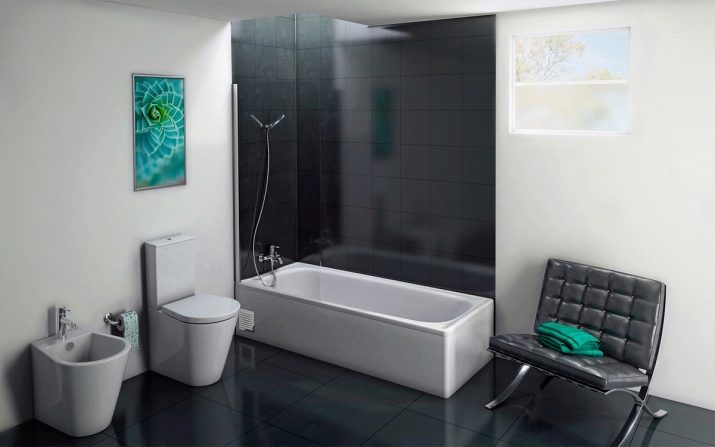
In the next video, you will learn how to properly soundproof the bath with foam.
